Tra Vinh, Vietnam is a province located in the Mekong Delta, situated between the Tien and Hau Rivers, and bordering the provinces of Ben Tre, Vinh Long, and Soc Trang. In addition to being nestled between two major rivers, Tra Vinh, Vietnam boasts a 65-kilometer-long coastline that contributes to the fertility of this land, adorned with abundant orchards bearing delicious fruits.
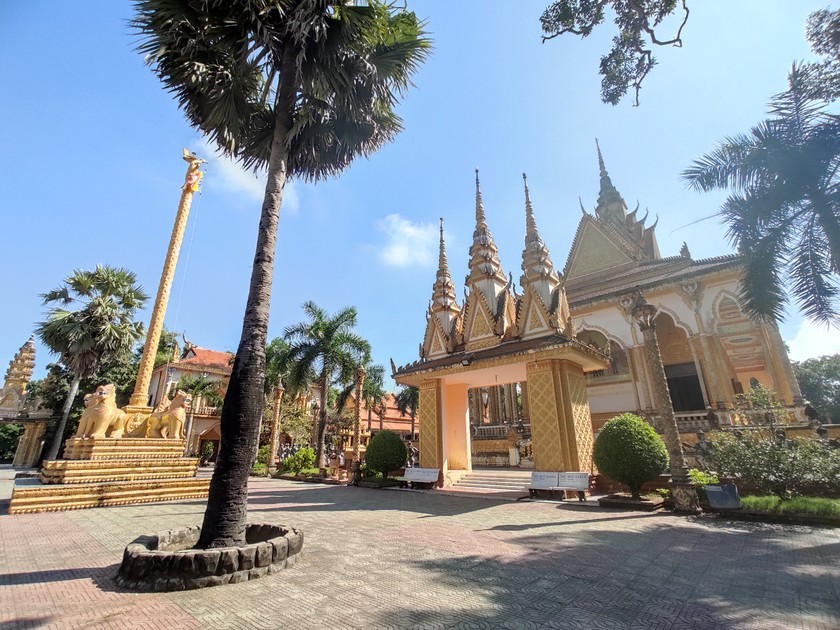 |
| The pagoda is situated in Dai An Village within Tra Cu District, around 40 kilometers south of Tra Vinh. Photo: Nguyen Thuan |
The pagoda is situated in Dai An Village within Tra Cu District, around 40 kilometers south of Tra Vinh. It bears significant influences from Khmer architectural elements. The surroundings of the pagoda are adorned with bamboo trees and various other types of plants. In the past, the pagoda earned the name Chua Co (Bird Pagoda) due to its role as a sanctuary for thousands of birds, including storks, herons, and pigeons.
According to records, Nodol Pagoda was first built in 1677 and then restored many times. Over hundreds of years of history, Nodol Pagoda still retains its special ancient architectural beauty.
Stepping in from the outside, visitors are immediately attracted by the majestically built three-entrance gate, characterized by three prominent towers. The gate is crafted with embossed lotus paintings on both sides of the pillars. The temple grounds are surrounded by rows of green trees running along the long wall with eye-catching carved and curving patterns.
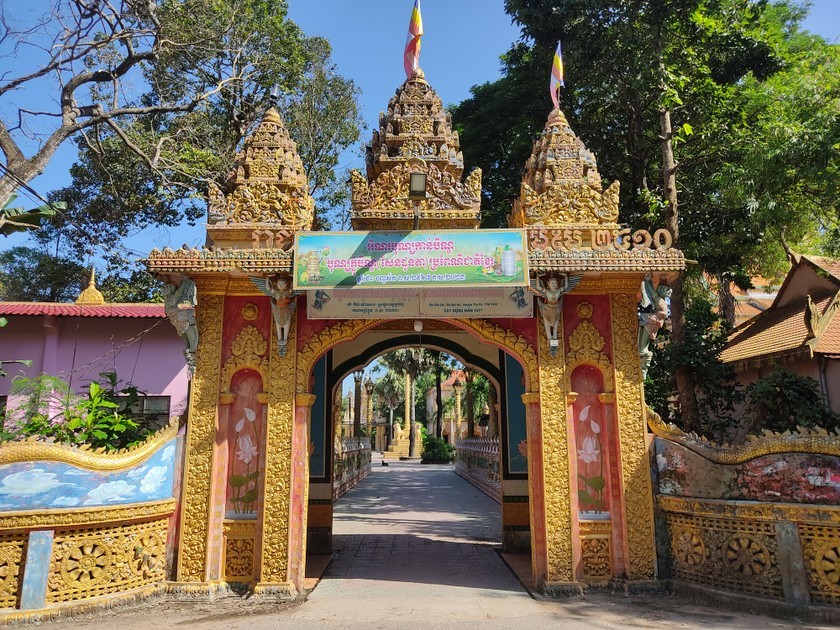 |
| According to records, Nodol Pagoda was first built in 1677 and then restored many times. Photo: Nguyen Thuan |
Entering the campus is a series of buildings such as the main hall, ossuary tower, monk’s house, and meeting house built with harmonious structure. The central building is the main hall with a curved roof designed in the shape of a dragon’s tail, which are pointed towers in the shape of Khmer pagodas.
The supporting pillars and corridors are decorated with familiar Khmer images such as the four-faced god Mohabrom, the bird god Kayno, the god Riehu, and Mahaknot. The outside of the main hall is painted with gold and decorated with exquisite patterns. The space inside is also decorated with a large statue of Shakyamuni Buddha in the middle along with small statues on the side. The walls and ceiling are decorated with many splendid, colorful paintings, representing Buddhist themes.
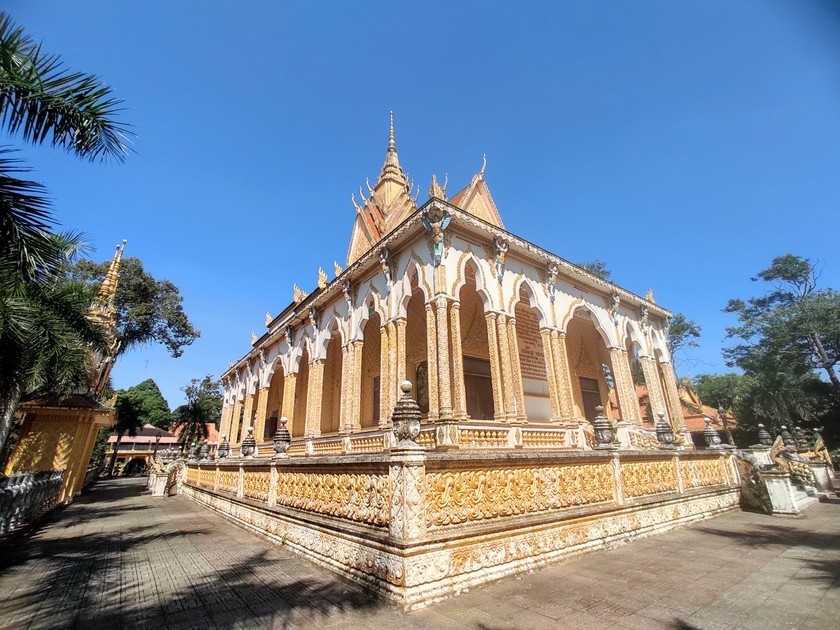 |
| Over hundreds of years of history, Nodol Pagoda still retains its special ancient architectural beauty. Photo: Nguyen Thuan |
According to the local people, the special name Co Pagoda has been around for a long time, originating from the fact that the pagoda grounds became a shelter for thousands of birds and storks to live here. For the people of Cay Da hamlet, Nodol Pagoda is not only an important religious site but also a cultural tourist destination. From the temple gate to each interior structure, every detail bears the mark of Khmer Theravada Buddhist culture. It can be said that Nodol Pagoda also plays an important role in maintaining and developing the traditional culture of the Khmer people in Tra Vinh.
Every year, during traditional festivals, Nodol Pagoda is also a gathering place for a large community of people to hold unique religious and cultural activities. On these occasions, visitors come here not only to admire the architectural beauty and sacred space of the pagoda but also to have the opportunity to learn about culture, and history and participate in the life of the Khmer people in Tra Vinh.
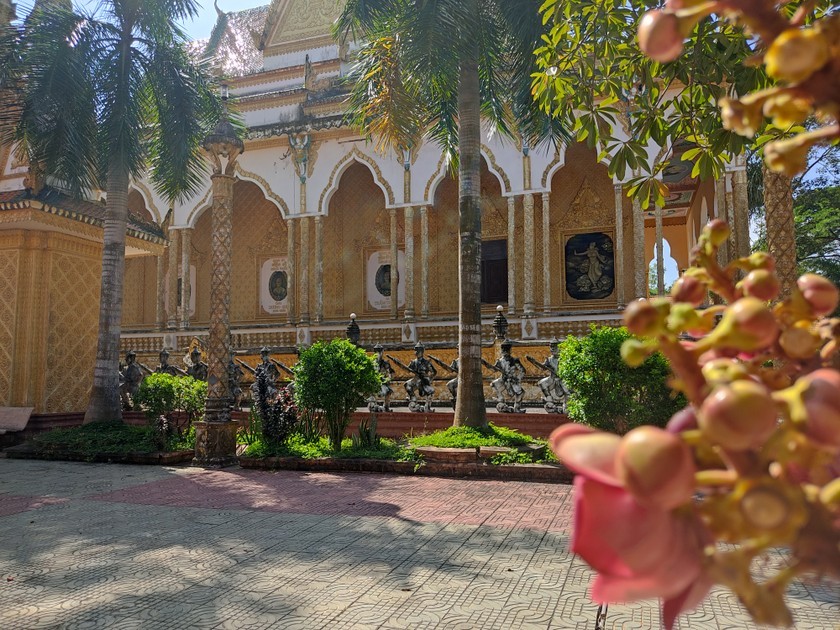 |
| For the people of Cay Da Hamlet, Nodol Pagoda is not only an important religious site but also a cultural tourist destination. Photo: Nguyen Thuan |
From architectural features to cultural activities, Nodol Pagoda is a symbol of the connection between belief and culture in the Khmer community in Cay Da hamlet.
It is not an exaggeration to say that Tra Vinh, Vietnam is a land favored by nature. The region enjoys a mild climate with rare occurrences of storms, making it perfect for year-round tourism.
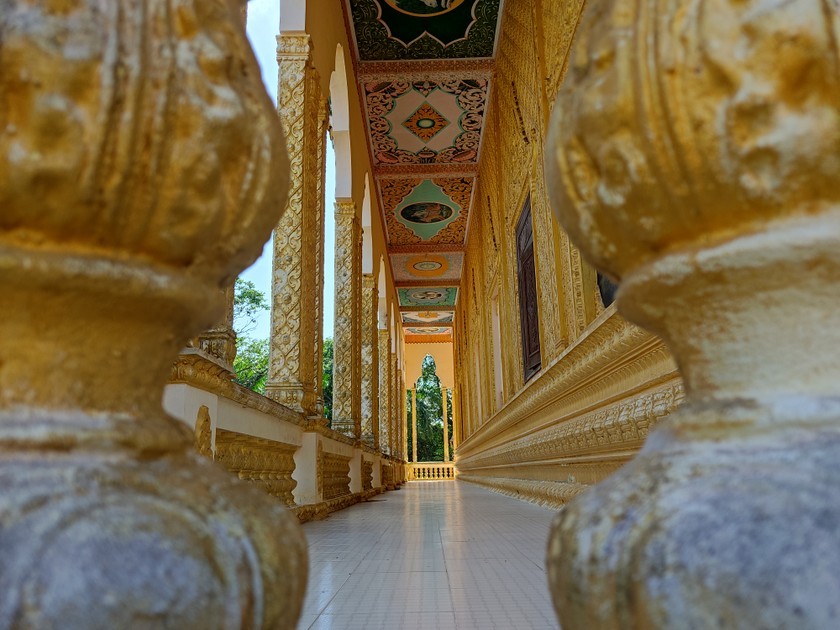 |
| From architectural features to cultural activities, Nodol Pagoda is a symbol of the connection between belief and culture in the Khmer community in Cay Da hamlet. Photo: Nguyen Thuan |
In particular, if tourists wish to wander through bountiful fruit orchards, it is recommended to visit Tra Vinh, Vietnam during the summer season. However, if they prefer a lively festival atmosphere, they can plan their visit between the lunar months of July and October.
If tourists visit Tra Vinh, they should try this land’s famous wax coconut. The creamy and tender wax coconut flesh, whether eaten directly or blended into a smoothie, offers a distinctive flavor that can be addictive from the first spoonful.



